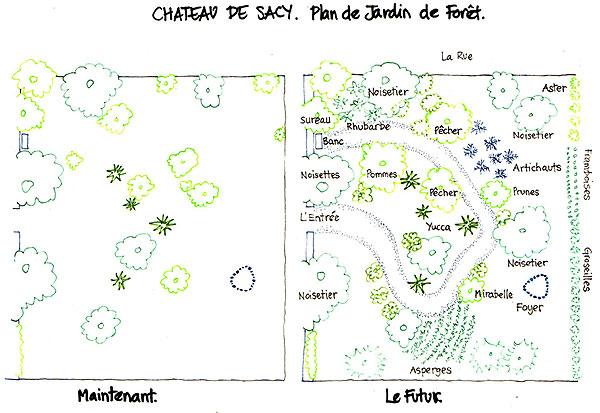Forest Garden
If a field is abandoned it is soon colonised by brambles, blackthorn, gorse or shrubby plants. Little trees grow up through this protective layer, and if they are left long enough they grow into the tall canopy of a new woodland. It takes a constant input of energy from human or from our grazing animals to stop this natural process of succession from happening. By planting a forest garden we are working with the natural inclination of the land rather than struggling against it.

The increase of carbon dioxide in the atmosphere is the biggest single cause of the greenhouse effect, and much of the carbon dioxide comes from the destruction and burning of forests around the world, including tropical rain forests. Growing new trees is one way to take carbon dioxide out of the atmosphere, by turning it back into living wood… No reason why desperately needed new trees should not be fruit trees planted by the owners of town and suburban gardens, who would gain the bonus of growing nourishing fruit.
“A forest garden works the same way as a natural woodland does… These woods usually have a structure consisting of three layers: the canopy of tall trees, a lower layer of shrubs and coppiced tees, and a layer of mainly herbaceous plants at ground level.” Forest gardens try to imitate this three-layer structure, with a tree layer, a shrub layer, and a vegetable layer (consisting of perennial vegetables such as asparagus, artichoke, and rhubarb. The individual layers may produce less than each would have when grown on it own, but the total yield from all three layers should be greater than any would have produced individually. This is to exploit the principle of companion planting, as occurs in a natural forest.
For further reading, see “How to Make a Forest Garden” by Patrick Whitefield.